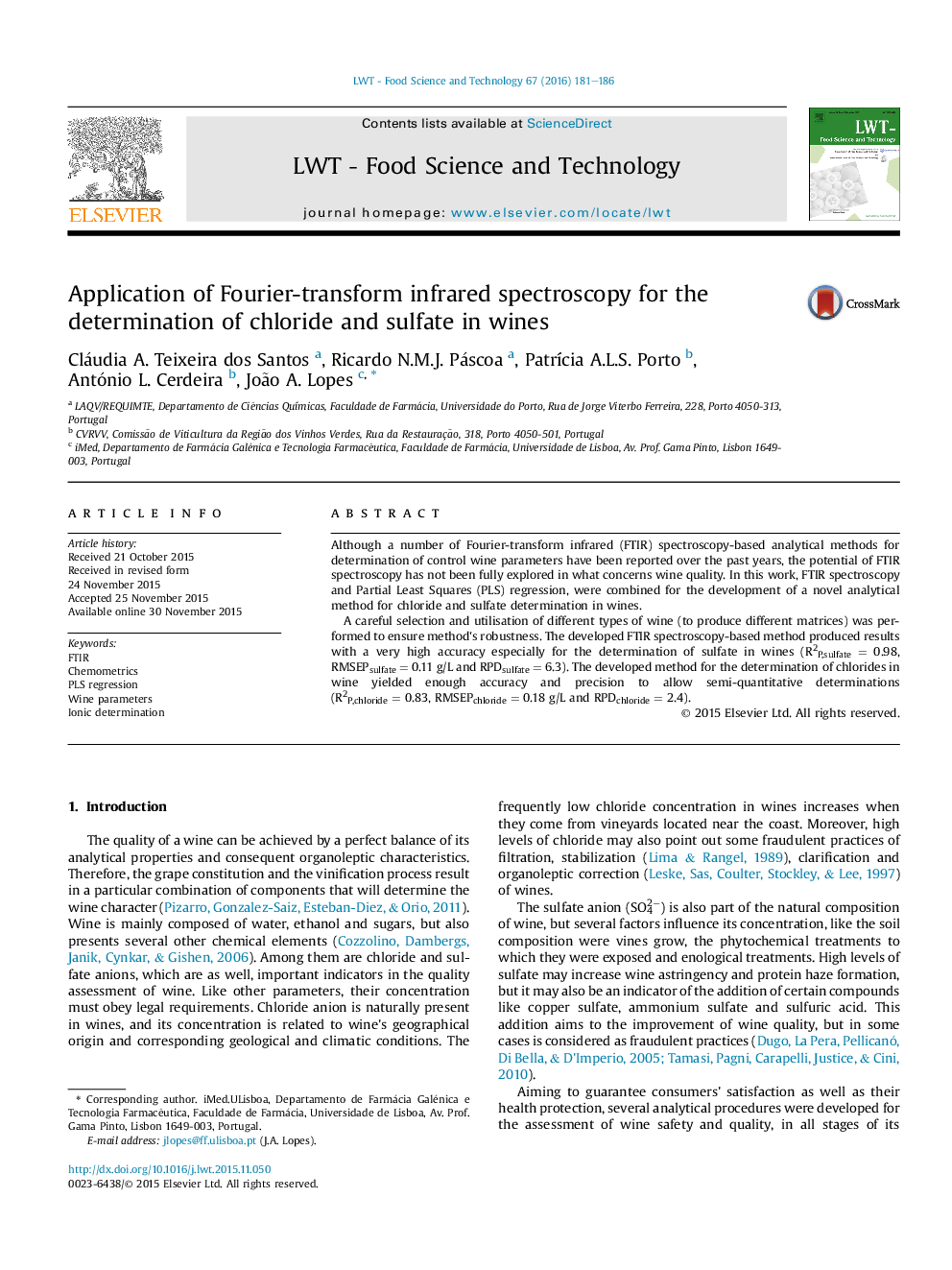| Article ID | Journal | Published Year | Pages | File Type |
|---|---|---|---|---|
| 4563827 | LWT - Food Science and Technology | 2016 | 6 Pages |
•Chloride and sulfate were successfully determined in wines by FTIR spectroscopy.•The FTIR based method was built using distinct wines (type and origin).•R2 of 0.98 and 0.83 were obtained for sulfate and chloride, respectively.•The proposed method presents advantages over established golden methods.
Although a number of Fourier-transform infrared (FTIR) spectroscopy-based analytical methods for determination of control wine parameters have been reported over the past years, the potential of FTIR spectroscopy has not been fully explored in what concerns wine quality. In this work, FTIR spectroscopy and Partial Least Squares (PLS) regression, were combined for the development of a novel analytical method for chloride and sulfate determination in wines.A careful selection and utilisation of different types of wine (to produce different matrices) was performed to ensure method's robustness. The developed FTIR spectroscopy-based method produced results with a very high accuracy especially for the determination of sulfate in wines (R2P,sulfate = 0.98, RMSEPsulfate = 0.11 g/L and RPDsulfate = 6.3). The developed method for the determination of chlorides in wine yielded enough accuracy and precision to allow semi-quantitative determinations (R2P,chloride = 0.83, RMSEPchloride = 0.18 g/L and RPDchloride = 2.4).
